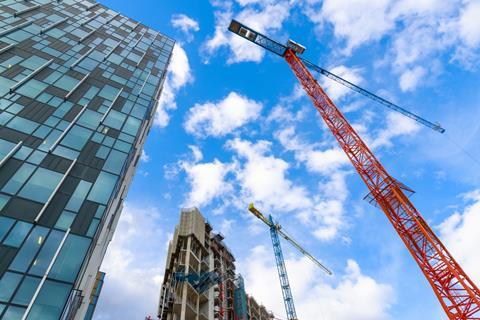Tim Galloway said around 75% of applications at ‘gateway 2’ are still being rejected because of missing or flawed information
The deputy head of the Building Safety Regulator has blamed a lack of industry design expertise for contributing to ‘gateway 2’ delays as he admitted he had “underestimated” how hard the transition to the new regime would be for firms.
Tim Galloway, deputy director, building safety regime development and regulatory support, at the Health & Safety Executive, said he had assumed demonstrating fire and structural safety in higher risk schemes, including residential buildings above 18m, would be “something that [industry firms] would already be able to do”.

However around 75% of applications for higher risk schemes are still being turned back by the regulator at the ‘gateway 2’ stage for pre-construction approval.
Whereas accepted applications are being delayed due to the regulator’s outsourcing model for assembling technical teams, which has struggled with a lack of capacity, flawed applications submitted by project teams are understood to be a key cause of hold-ups.
Galloway said gateway 2 applicants “don’t quite as yet understand what is expected of them” despite several years of signalling by the Health and Safety Executive, which contains the regulator, on what the requirements of the new regime would be.
The regulator is currently rejecting around 40% of gateway 2 applications because they fail to meet requirements and another 35% because they are missing key information, sometimes of a “basic” level, Galloway said.
In one case, an application was returned as the applicant had failed to provide any material demonstrating how a scheme complied with building regulations and instead had simply written “it complies” on the application form.
Others have failed to demonstrate the foundations would be strong enough to support the building or that evacuation routes would be kept free of smoke in the event of a fire, according to Galloway.
“This is fairly fundamental stuff and standards that are at least a decade and a half old in terms of what’s intended to be achieved, and that’s quite worrying that applications are not able to show fire safety and not able to show structural safety, which one would have expected,” he said.
While the BSR had done modelling on how the industry would respond to the new regime, Galloway admitted this had “not survived contact with reality”.
Although he said some industry firms had put measures in place to prepare for the new regime before it came into force in October 2023, he said others had taken a “more of a wait and see approach, and are now trying to catch up a little”.
Galloway led the team which was producing guidance in the run-up to the new regime but confessed some of it had been kept “conceptual” for longer than expected because of delays in the legislation.
He said the BSR is now carrying out “intense” work with the Construction Leadership Council to provide more detailed guidance but called for industry firms to take the lead.
“I want industry to write that guidance, because it will be better than anything I could write,” he said.
“You need people who have got that deep construction industry experience, who understand the process, understand the right phraseology, understand how the designers and the architects and the other players interact, because they will write it with that in mind.”
Asked if he would do anything different in light of the delays to gateway 2 approvals, he said it “would be to recognize that this might be more of a change for the industry than I’d anticipated”.
>>See also: What the delays at the Building Safety Regulator mean for high-rise development
>>See also: How closely has the government adhered to the Grenfell Inquiry’s recommendations?
>>See also: ‘A real bottleneck’ - BPF boss calls for action on building safety delays as build-to-rent work slows
“When one looks at the applications that we’ve received, and some of them not being able to demonstrate structural safety, not being able to demonstrate fire safety, perhaps I thought of that as being something that they’d already be able to do, and it would be more about helping them through the process of demonstrating that in a different way.
“What we have learned, I think, is that there’s more of a need for that investment in upfront design, that thinking to be done by those submitting the applications earlier, and that’s something that has required more transition for the industry than I think we’d expected.”
The British Property Federation blamed “significant delays” at the BSR for a 14% decrease in the number of build-to-rent homes under construction in the first quarter of this year compared to last year in a report published earlier this week.
The paper showed London has seen the steepest fall, down 18% year-on-year to 15,000 homes under construction, while the regions dropped by 12% to 34,870.
Student housing developer Unite has said the issues were adding six months to the average length of build programmes while Quintain has been waiting more than nine months for sign off on one of its schemes at Wembley Park.










No comments yet